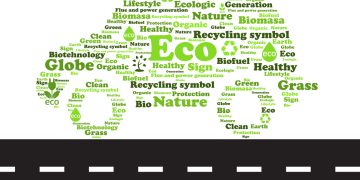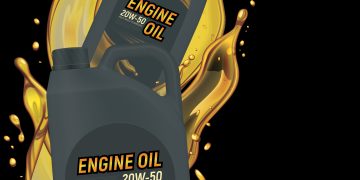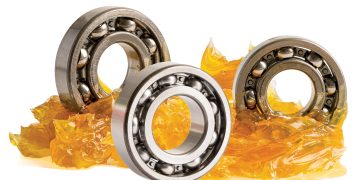Lubrication involves using liquids, oils, or greases to make two surfaces that contact each other slide more easily and avoid damage. Lubricants are made of base oils and supplements, which improve their characteristics and functions. Lubricants are essential for the smooth operation and maintenance of various types of machinery, but lubricants also have powerful environmental impacts, both in terms of their production and disposal. Some of the major environmental concerns related to lubricants include resource deficiency, pollution, and waste generation. Several strategies can be adopted to reduce these impacts, such as using sustainable lubricants, improving lubricant performance, and implementing environmental regulations and standards. This article aims to provide a global synopsis of lubrication and aftermarket products, as well as the environmental impacts and mitigation strategies of lubricants.
Types of Lubrication Products
Lubricants can be broadly classified based on their physical state into:
- liquid lubricants or lubricating oils
- semi-solid lubricants or greases
- solid lubricants.
Liquid lubricants or lubricating oils are thin liquids that are made up of long polymer chains with additional additives, such as antioxidants, corrosion inhibitors, and detergents. They are difficult to squeeze out between the surfaces of the long chains, but with the application of oil, they can create a slippery barrier between them. Liquid lubricants are widely used in industries such as automotive, aerospace, construction, chemical, or textile industries to ensure the smooth functioning of their machinery and equipment.
Semi-solid lubricants or greases are created by combining oil (typically mineral oil) with thickeners (such as lithium-based soaps). Lubricants such as molybdenum disulfide, graphite, and others may be combined with additional particles. Greases can mix well with the lubricants in the oil, adding stickiness and allowing the lubricants to collect on the surfaces. Grease can also act as a barrier, protecting surfaces from contaminants that can damage the surface. Greases are used for applications such as gears, bearings, chains, and linkages, where the lubricant needs to adhere to the surface for an extended period, or where dust and water droplets need to be kept out.
Solid lubricants are substances that have a low coefficient of friction and can slide over each other easily. They are used for applications where liquid or semi-solid lubricants are not suitable, such as high temperatures, high pressures, or high loads. Some examples of solid lubricants are graphite, molybdenum disulfide, and polytetrafluoroethylene (PTFE). Solid lubricants are used for applications such as locks, hinges, sliding doors, and electrical contacts.
Exploration of Environmental Impact
Some of the major environmental concerns related to lubricants are:
Resource depletion: Lubricants are derived from the same limited reserves as fuels, such as crude oil and natural gas. The extraction and refining of these resources consume energy and generate greenhouse gas emissions, contributing to climate change and resource scarcity.
Pollution: Lubricants can enter the environment through various pathways, such as leakage, spillage, evaporation, or improper disposal. Lubricants can contaminate soil, water, and air, affecting the quality of these resources and posing risks to human health and wildlife. Lubricants can also contain toxic additives, such as polycyclic aromatic hydrocarbons (PAHs), metals, and chlorinated compounds, which can accumulate in the environment and cause adverse effects.
Waste generation: Lubricants have a finite life span and need to be replaced periodically. The used lubricants become waste, which requires proper collection, treatment, and disposal. However, many lubricants are not recycled or disposed of properly, leading to environmental problems and wastage of valuable resources. 
To mitigate the environmental impacts of lubricants, several strategies can be adopted, such as:
Using sustainable lubricants: Sustainable lubricants are those that have lower environmental impacts than conventional lubricants, such as biodegradable, bio-based, or re-refined lubricants. These lubricants can reduce the dependence on fossil resources, lower the emissions of greenhouse gases and pollutants, and enhance the biodegradation and recyclability of lubricants.
Improving lubricant performance: Lubricant performance can be improved by using high-quality base oils and additives, optimising the lubricant formulation and selection, and implementing proper lubricant management and maintenance practices. These measures can extend the life span and efficiency of lubricants, reduce lubricant consumption and waste generation, and lower the environmental impacts of lubrication.
Implementing environmental regulations and standards: Environmental regulations and standards can provide guidelines and incentives for the lubricant industry and consumers to adopt more environmentally friendly lubricants and practices. These regulations and standards can cover aspects such as the quality, labeling, testing, and disposal of lubricants, as well as the environmental performance and compliance of lubricant producers and users.
Case Studies on Popular Lubrication Products
Many case studies demonstrate the benefits of lubrication excellence and the use of sustainable lubricants in various industries and applications. Let’s analyse some examples of popular lubrication products and their success stories:
SKF’s New Oil Regeneration Technology: SKF is a leading global supplier of bearings, seals, mechatronics, lubrication systems, and services. SKF has developed a new oil regeneration technology that can restore performance and extend the life of used lubricating oils. The technology uses a combination of vacuum distillation and coalescing filtration to remove water, gases, and solid contaminants from the oil, as well as to restore the oil’s viscosity, acidity, and additive levels. The technology can be applied to various types of oils, such as turbine oils, hydraulic oils, gear oils, and compressor oils. The benefits of the technology include reduced oil consumption and disposal, lower environmental impact, improved equipment reliability and efficiency, and lower maintenance costs.
Nippon Steel’s Lubrication Excellence Programme: Nippon Steel is one of the world’s largest steel producers, with operations in Japan and overseas. Nippon Steel has implemented a lubrication excellence programme that aims to improve the reliability and productivity of its equipment and processes. The programme involves the use of synthetic lubricants, oil analysis, lubricant management, and lubrication training. The programme has resulted in significant improvements in the performance and life span of the equipment, such as bearings, gears, pumps, and compressors. The programme has also reduced the lubricant consumption and waste, as well as the energy consumption and emissions.
Noria’s Lubrication Excellence Training: Noria is a leading provider of lubrication and reliability solutions, offering consulting, training, and certification services. Noria has helped many companies across different industries to achieve lubrication excellence and improve their reliability and profitability. One of the examples is a paper mill in the United States, which implemented Noria’s lubrication excellence training programme. The programme involved the assessment of the current lubrication practices, the development of a lubrication excellence plan, the training of the lubrication personnel, and the monitoring of the results. The programme led to a reduction of lubricant consumption by 68%, the lubricant waste by 75%, and the lubrication labour by 50%. The programme also increased the equipment availability by 15%, the production output by 10%, and the annual savings by US$1.2 mln.
Lubrication products are essential for the smooth operation and maintenance of various types of machinery, but they also have significant environmental impacts, both in terms of their production and disposal. Therefore, it is important to choose the right type of lubricant for the right application. The efficient use and disposal of lubricants must be strictly ensured. By doing so, lubrication products can be a friend rather than a foe to the environment, economy and people.


























































